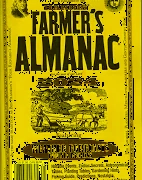If You Can’t Write Content, Review??
With tongue in cheek and as a retort to some negative criticism, 19th century American poet James Russell Lowell remarked, “He who would write and can’t write, can surely review.” Yes, we’re all sensitive when it comes to our outputs and ideas, blogger J.D. Zankic admits, advising readers not to impose their own disciplinary views on others and instead try to learn from seeing a concept “analyzed through another’s lens”…,
“There are ways to go about repurposing other people’s content so that you are not just copying them but adding to the conversation,” the Amp Agency says. “Always quote your sources and give a link to the original publisher of the content you’re referencing,” Thryv.com adds.
“You’re allowed to copy work to criticize, comment, or parody,” the Content Marketing Institute teaches. A good question to ask yourself, though, is whether your use of the content might in any way subtract from the value that would otherwise go to the content creator. In fact, many content writers will appreciate the additional exposure.
Recalling George Bernard Shaw’s saying (“Those who can, do’ those who can’t teach”), if you can’t write, is reviewing others’ writing your fallback position? Not at all. I like the view expressed by Ethics Sage: “Teachers teach because they want to make a difference in the lives of their students.”
One function of any marketing blog is to provide valuable information to consumers, information that could, in fact, make a difference in their lives. At the same time, in providing content writing assistance to our Say It For You business owner and professional practitioner clients, we try to steer readers away from the kind of order-now-or-lose-it sales tactics we see on late night TV or coupon web sites.
But, far from “imposing our own disciplinary views on others,” at Say It For You we advise taking the high road in marketing strategy. Rather than calling attention to what the competition is doing “wrong”, we tell clients, the blog content should demonstrate what they value and the way they have chosen to deliver that value to customers.
As content marketers, we quote, not because we can’t (write), but because we can!






Follow us online!